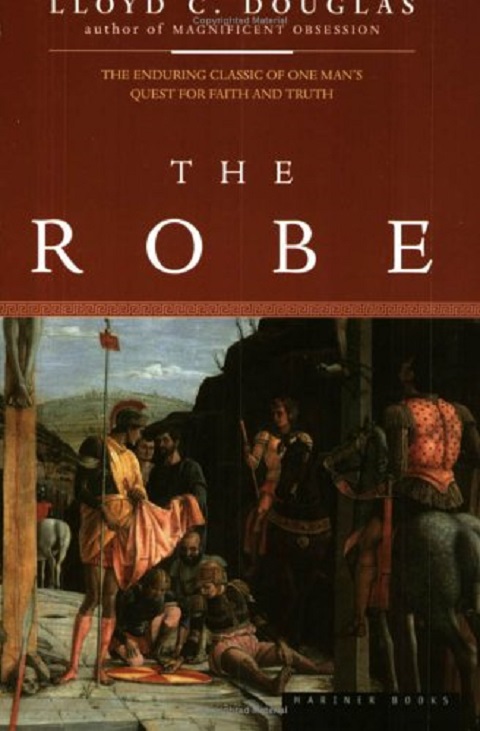Welcome to First Chapter, First Paragraph Tuesday Intros,
hosted by Diane @
Every Tuesday, each participant
shares the first paragraph
shares the first paragraph
(sometimes two) from a book
they're reading,
they're reading,
or thinking about reading.
The book I've picked this week is...
The Robe
Lloyd C. Douglas
Trade Paperback, 508 pages
A Mariner Book
Houghton Mifflin Company
April 7,1999
Christian Fiction, Classics, Historical Fiction,
Religion, Spirituality
About the Book
A Roman soldier, Marcellus, wins Christ's robe as a gambling prize. He then sets forth on a quest to find the truth about the Nazarene's robe-a quest that reaches to the very roots and heart of Christianity and is set against the vividly limned background of ancient Rome. Here is a timeless story of adventure, faith, and romance, a tale of spiritual longing and ultimate redemption.
Chapter 1
Because she was only fifteen and busy with her growing up, Lucia's periods of reflection were brief and infrequent; but this morning she felt weighted with responsibility.
Last night her mother, who rarely talked to her about anything more perplexing than the advantages of clean hands and a pure heart, had privately discussed the possible outcome of Father's reckless remarks yesterday in the Senate; and Lucia, flattered by this confidence, had declared maturely that Prince Gauis wasn't in a position to do anything about it.
But after she had gone to bed, Lucia began to fret. Gauis might indeed overlook her father's heated comments about the extravagances and mismanagement of his government, if he had had no previous occasion for grievance against the Gallio family. There was, however, another grievance that no one knew about except herself -- and Diana. They would all have to be careful now or they might get into serious trouble.
Last night her mother, who rarely talked to her about anything more perplexing than the advantages of clean hands and a pure heart, had privately discussed the possible outcome of Father's reckless remarks yesterday in the Senate; and Lucia, flattered by this confidence, had declared maturely that Prince Gauis wasn't in a position to do anything about it.
But after she had gone to bed, Lucia began to fret. Gauis might indeed overlook her father's heated comments about the extravagances and mismanagement of his government, if he had had no previous occasion for grievance against the Gallio family. There was, however, another grievance that no one knew about except herself -- and Diana. They would all have to be careful now or they might get into serious trouble.
I read this great novel many years ago,
and it has left a lasting impression on me, so I want to re-read it.
Have you ever read this classic?
and it has left a lasting impression on me, so I want to re-read it.
Have you ever read this classic?
If so, what did you think?
If not, has the selection above
enticed you to do so?
enticed you to do so?
I would love to know!








